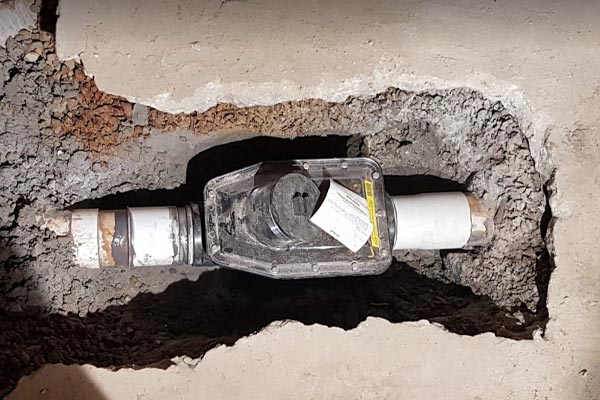A backwater valve plays a crucial role in protecting your home from the worst flooding damage you could imagine: sewage. This unsung hero in your plumbing system helps prevent sewer backup, safeguarding your property and valuables. In this guide, we’ll explore what a backwater valve is and how to inspect it to ensure it’s working properly.
What is a Backwater Valve?
A backwater valve is a plumbing device designed to stop sewage from flowing back into your home. It’s installed in your sewer line and works as a one-way gate, allowing wastewater to exit your home but preventing it from re-entering during heavy rains or sewer system backups.
When wastewater flows out of your home, the valve remains open, allowing it to exit into the municipal sewer system. However, when there is a surge of water coming back toward your home, the valve’s flap closes, preventing any sewage or water from entering your property.
How to Inspect Your Backwater Valve
1. Locate the Backwater Valve
The backwater valve is typically installed in the sewer line, often in the basement or outside at the point where your home’s sewage system connects to the municipal sewer line.
2. Ensure Safety
Before you begin, you may want to wear gloves and protective eyewear, especially if the area is dirty or potentially hazardous. After all, it is wastewater we’re dealing with.
3. Visual Inspection
Inspect the valve visually for any signs of damage, wear, or corrosion. Look for cracks, loose parts, or debris that may obstruct the valve’s operation.
4. Check for Blockages and Clear Them
Inspect the valve’s flap or gate to ensure it moves freely and smoothly. Any debris or blockages could prevent it from closing properly when wastewater begins rushing back into your home during a heavy thunderstorm. Wouldn’t hurt to maybe give it a little clean too.
5. Replace If Necessary
If you find your backwater valve is damaged or non-existent, it may be time to replace it. This can be done by a professional plumber.
Like most other parts of your home that are used regularly, a backwater valve should be inspected or have maintenance performed at least once a year.
It’s important to keep in mind that while homeowners can perform basic visual inspections and some maintenance tasks, more complex issues or repairs may require the expertise of a professional. Regular maintenance and inspection of your backwater valve will help ensure it remains in good working condition, providing protection against sewer backups and water damage to your home.
Inspecting and maintaining your backwater valve is a fundamental aspect of homeownership that shouldn’t be overlooked. By understanding how these valves work, recognizing their importance in waterproofing, and investing in regular upkeep, you can enjoy peace of mind knowing that your home is protected from disastrous sewer backups and water damage. And if you don’t already have a backwater valve, don’t hesitate to contact a professional to install one and fortify your home’s defenses against potential disasters.

